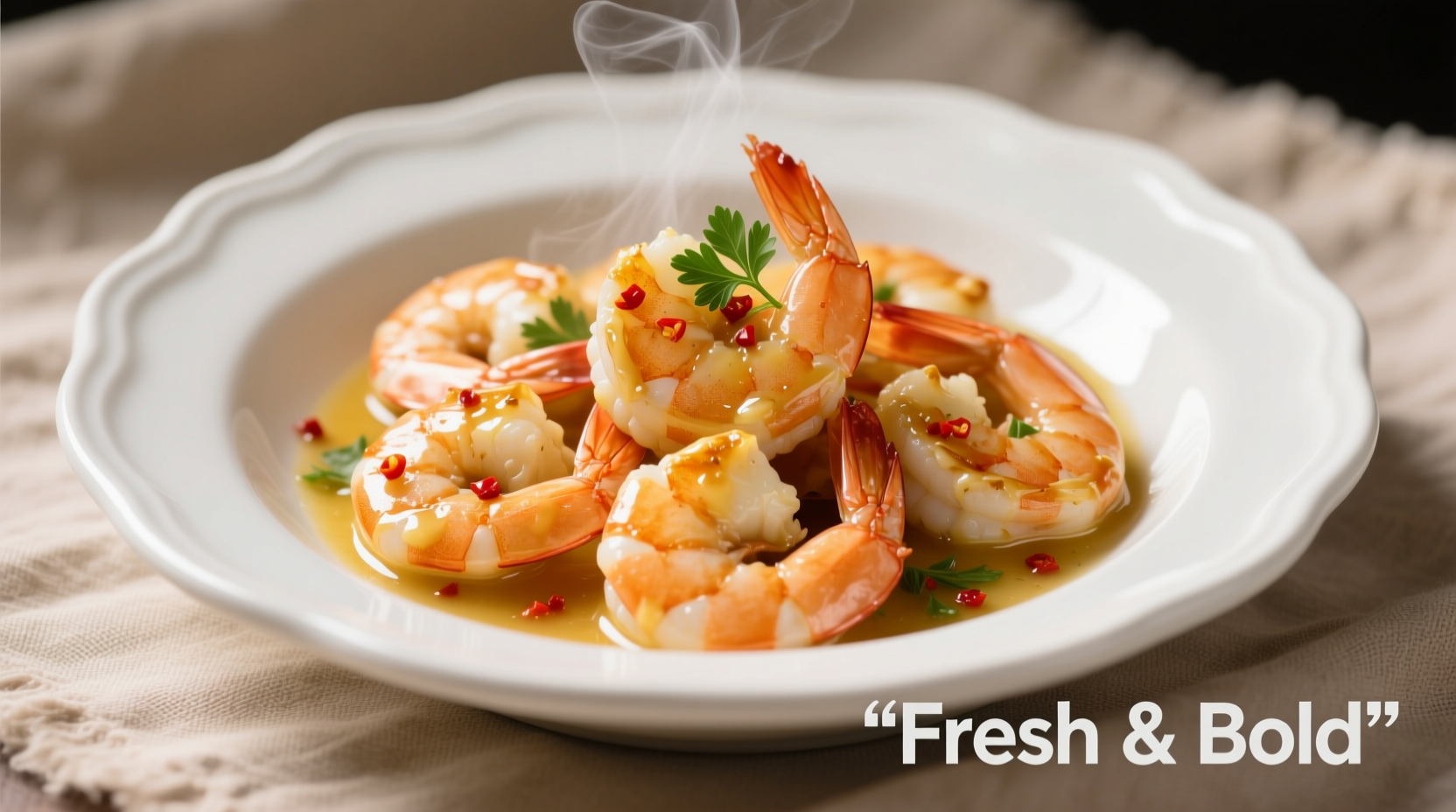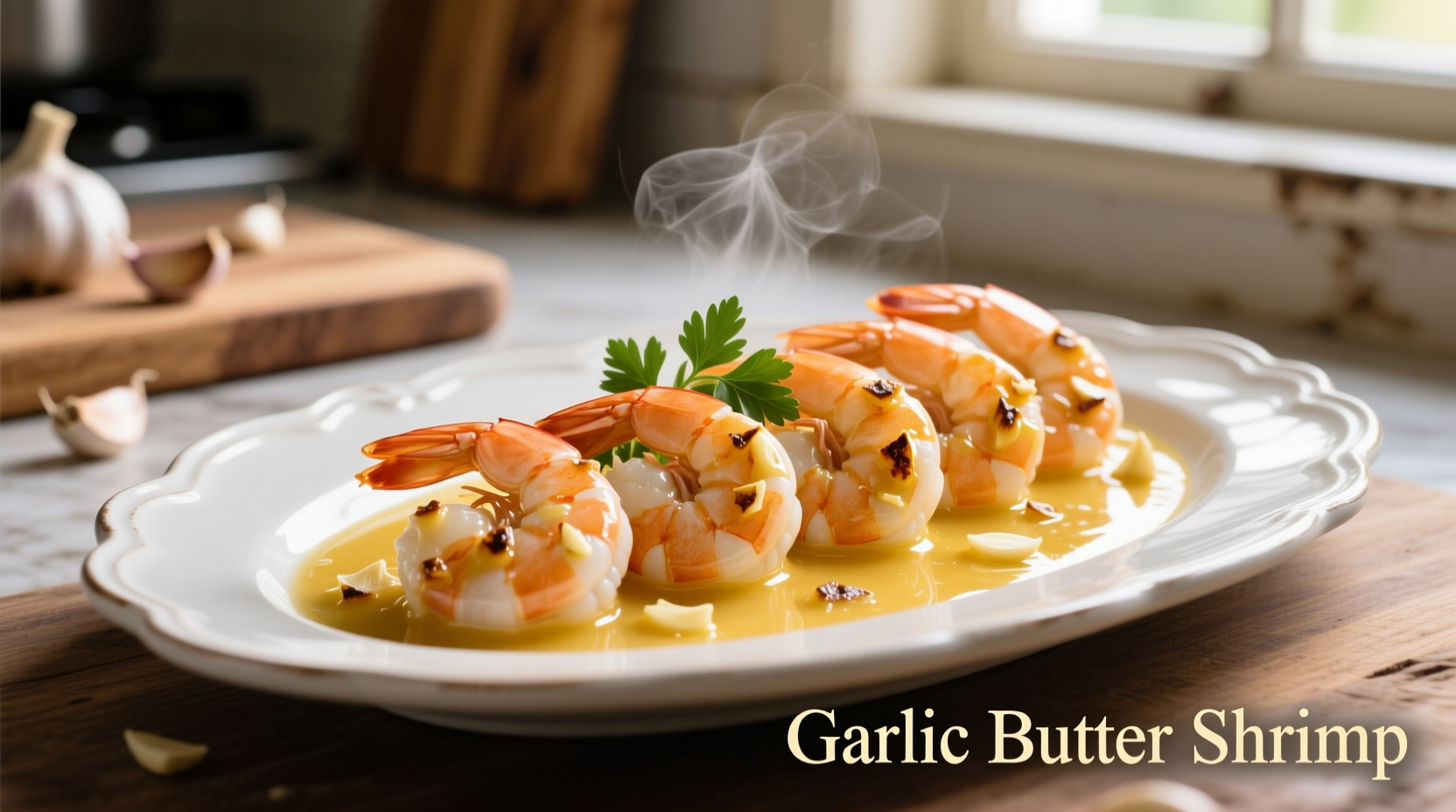Your Complete Guide to Perfect Buttered Garlic Shrimp
Buttered garlic shrimp represents one of the most universally loved seafood preparations worldwide. This simple yet sophisticated dish showcases how minimal ingredients can create maximum flavor when executed properly. Unlike many online recipes that result in rubbery shrimp or overpowering garlic, our tested method delivers consistently excellent results through precise timing and technique.
Why This Recipe Works
The magic of buttered garlic shrimp lies in the emulsion created between high-quality butter, fresh garlic, and properly cooked shrimp. When executed correctly, the natural sweetness of the shrimp complements rather than competes with the aromatic garlic. Our method addresses the two most common failures in home preparation: overcooked shrimp and raw garlic flavor.
Essential Ingredients Explained
Quality ingredients form the foundation of exceptional buttered garlic shrimp. Understanding each component's role helps you make informed substitutions when necessary without compromising the final dish.
| Ingredient | Why It Matters | Quality Indicator |
|---|---|---|
| Shrimp (21-25 count) | Larger shrimp cook more evenly and resist overcooking | Firm texture, ocean scent, no ammonia odor |
| Unsalted butter | Allows precise salt control and creates superior emulsion | Pale yellow color, clean dairy aroma |
| Fresh garlic | Raw garlic burns easily; proper timing is crucial | Firm cloves, no green sprouts, papery skin |
| Extra virgin olive oil | Higher smoke point than butter alone prevents burning | Grassy aroma, golden-green color |
The Evolution of Garlic in Seafood Cooking
Garlic's journey from ancient medicinal plant to culinary staple spans millennia. Historical records show Mediterranean civilizations using garlic with fish as early as the 4th century BCE. The specific combination of butter and garlic with seafood emerged during the 18th century in French coastal regions, where butter preservation techniques improved. By the mid-20th century, this preparation gained international popularity through chefs like Julia Child, who documented proper technique in her 1961 cookbook Mastering the Art of French Cooking. Modern food science confirms that cooking garlic in fat (rather than dry heat) creates more complex flavor compounds while reducing harsh sulfur notes.
Step-by-Step Cooking Process
Preparation Phase (5 minutes)
Dry shrimp thoroughly with paper towels - moisture is the enemy of proper searing. Season lightly with sea salt (¼ teaspoon per pound) and freshly cracked black pepper. Mince garlic to uniform ⅛-inch pieces to ensure even cooking. Have all ingredients measured and within reach before starting, as the cooking process moves quickly.
Cooking Phase (8 minutes)
- Heat 1 tablespoon olive oil and 1 tablespoon butter in a heavy skillet over medium-high heat until shimmering (not smoking)
- Add shrimp in single layer, ensuring space between pieces for proper searing
- Cook 1½-2 minutes per side until opaque but still slightly translucent in center
- Remove shrimp immediately to prevent carryover cooking
- Add remaining 3 tablespoons butter to pan, then garlic; cook 45-60 seconds until fragrant but not browned
- Return shrimp to pan, add lemon juice (1 tablespoon per pound), and toss to coat
- Finish with fresh parsley and optional red pepper flakes
Avoid These Common Mistakes
Based on USDA Food Safety guidelines, improper seafood handling causes 15% of foodborne illness cases annually. For buttered garlic shrimp specifically, these errors compromise both safety and quality:
- Overcrowding the pan: Causes steaming instead of searing - use multiple batches if necessary
- Adding garlic too early: Burns at 325°F (163°C) while shrimp need 375°F (190°C) for proper sear
- Using pre-minced garlic: Contains preservatives that create bitter flavors when cooked
- Overcooking shrimp: They continue cooking off-heat - remove at 120°F (49°C) internal temperature
Serving and Pairing Recommendations
Buttered garlic shrimp shines when served immediately. For optimal presentation, arrange shrimp around the plate with garlic butter spooned over the top. Classic pairings include:
- Crusty bread for soaking up the flavorful sauce
- Light arugula salad with lemon vinaigrette
- Steamed asparagus or roasted cherry tomatoes
- Orzo pasta with fresh herbs
For wine pairing, select a crisp white with enough acidity to cut through the richness - Sancerre, Vermentino, or unoaked Chardonnay work beautifully. The ideal serving temperature for shrimp is 140°F (60°C), which maintains texture while ensuring food safety according to FDA guidelines.

Storage and Reheating Guidelines
While best served fresh, properly stored buttered garlic shrimp maintains quality for 2 days. Follow these USDA-recommended practices:
- Cool to room temperature within 2 hours of cooking
- Store in airtight container with sauce (prevents drying)
- Refrigerate below 40°F (4°C)
- Reheat gently in skillet with splash of water or broth
Freezing is not recommended as shrimp texture deteriorates significantly. When reheating, ensure internal temperature reaches 145°F (63°C) as measured by food thermometer - the point at which shrimp become fully opaque.
Variations for Different Dietary Needs
This versatile recipe adapts well to various dietary requirements without sacrificing flavor:
- Dairy-free: Substitute butter with refined coconut oil and 1 tablespoon nutritional yeast
- Lower sodium: Reduce salt by half and add ¼ teaspoon celery seed for depth
- Spicy version: Add ½ teaspoon smoked paprika with garlic for complex heat
- Herb variation: Incorporate 1 tablespoon each of fresh thyme and tarragon with parsley
Professional Technique: The Butter Emulsion Secret
Restaurant-quality buttered garlic shrimp features a silky sauce that clings to each piece. The professional technique involves creating a stable emulsion:
- Cook shrimp and remove from pan
- Add cold butter cubes (¼ cup) to hot garlic oil
- Whisk constantly as butter melts and incorporates
- Continue whisking until sauce thickens slightly
- Return shrimp to pan and toss to coat evenly
This method, documented in the Culinary Institute of America's Professional Cooking textbook, creates a stable emulsion through proper temperature control and gradual incorporation. The sauce should coat the back of a spoon but remain fluid enough to drizzle.











 浙公网安备
33010002000092号
浙公网安备
33010002000092号 浙B2-20120091-4
浙B2-20120091-4